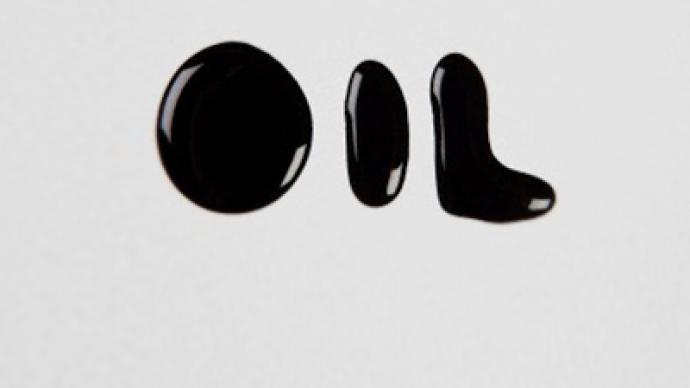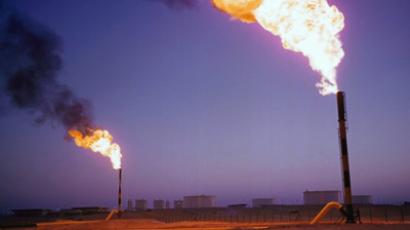Crude supply balance belies price surge

With global crude prices holding well above 2010's $70-80/bbl range analysts say that the demand recovery which began in 2010 will continue to be the major driving factor, but add that currently there is ample supply.
Late January 2011 sees Brent for March delivery holding above $95/bbl, and West Texas Intermediate for March hovering at about $87/bbl, after a late 2010 surge pushed price well beyond the $70-$80/bbl range they traded at for most of the year.This is despite expectations that US data will show increased reserves when released later this week, after the traditional rundown over the Christmas and New Year period, and with analysts saying supply is having no problems meeting existing demand.Jim Burkhard, Managing Director of the IHS Global Oil Group, says strong inventory figures, coupled with refining capacity, helped to keep prices within the $70-$85/bbl range for much of 2010, but signs of strong demand growth later in the year underpinned price rises. “A number of factors kept oil prices within this range for much of 2010 – at least until recently. Inventories in Europe and North America have been at high levels. Total oil inventories for all OECD members have been around 2.8 billion barrels (crude oil and refined products). This is around 10-15 percent higher than the 2003-2007 period – a time of a sustained increase in oil prices. Spare crude oil production capacity has averaged between 5.5 to 6 mbd in 2010, compared to around 2 to 3 mbd for much of the 2003-2007 period. Spare refining capacity is also at comfortable levels when compared to spring 2007 and spring 2008 when gasoline and distillate demand was appearing to outpace refiners' ability to produce them. Sufficient "cushion" in the oil market – in terms of spare capacity – tends to moderate price moves. At the same time, world oil demand growth has proven to be quite strong, which fostered bullish market psychology – especially toward the end of 2010.”UniCredit Securities Oil and gas analyst, Artem Konchin, says the 2010 oil environment reflected the interplay between demand and global macroeconomic circumstances. “Basically, 3 major factors were driving the oil market in 2010. First, it’s currency volatility, which increased people’s interest in oil as a safer asset. Second, it’s inflationary expectations and finally America’s injections into the economy, with investors waiting for the market reaction on how this would influence global demand.”Konchin believes crude prices will average about $85/bbl over the course of 2011, with the driving factors remaining similar to 2010, but also with an increase focus on the role of speculation in the crude markets.“I think that the key factors and tendencies will remain virtually the same, with the volume reserve capacity, or, to be more exact, the speed of their exploration being one of the strongest drivers. Inflationary expectations in China will remain a big factor and, I think, in 2011 the market will make an attempt to get closer to a fair oil price and get rid of speculative factors. So, some legislation changes concerning the oil trade could be introduced. ”Uralsib oil and gas analyst, Julia Novichenkova, is forecasting an average Urals prices over 2011 of $83.1 per barrel.She says that that the 2010 oil market was also clouded by the Transocean disaster in the Gulf of Mexico, with Russian production also reflecting concerns aboutproduction concessions.“The oil spill in the Gulf of Mexico was the most remarkable event in the World oil market, which for several months created uncertainty about the oil price. Also, economic statistics from the US economy drove the market, with China increasing its role as a global oil player.Talking about Russia’s specifics, I’d mention the changes in taxation, for example, lifting privileges for extracting oil in Eastern Siberia, which frightened most of investors away and will remain a strong factor in 2011. ”Renaissance Capital oil and gas analyst, Ildar Davletshin, notes that concerns about the longer term supply balance could influence prices in the coming year. “I think that 2011 will mostly be a balancing year with no sharp turnarounds. But still the fears of lower global supply in 2012 and 2013 could be integrated into the price of oil already in 2011 and push them up.”Jim Burkhard, Managing Director of the IHS Global Oil Group, agrees that prospects of a tightening supply balance will push prices higher, but adds that a range of factors, including strong reserves and flat demand in developed economies should keep a lid on price rises.“Upward price pressure is likely to be tempered by still ample volumes of crude oil and refining capacity. The rate of oil demand growth will differ across the range of refined products. Demand for diesel and jet fuel are expected to be strong as they are the engines of economic development in key market around the world such as Asia and the Middle East. Gasoline, however, is likely to see relatively moderate demand gains given relatively flat consumption in the world's largest gasoline market--the United States. Higher fuel economy standards and biofuel mandates are two factors that moderate gasoline demand growth.”Burkhard is seeing a continuation of rangebound trading for oil with a continuing focus on Chinese demand and the US dollar as market shapers.“Under the conditions of our Global Redesign scenario – what we also refer to as our planning scenario – we expect oil prices will generally hover in the $75-95 band over the next year. The cost of developing new oil fields in a number of important oil producing regions is another element of support for high prices. As with any outlook, there are a number of risks. Sentiment about the future course of the global economy, demand signals from China and financial market factors – such as the value of the US dollar – will be among the important factors that will shape the oil price in 2011.”














